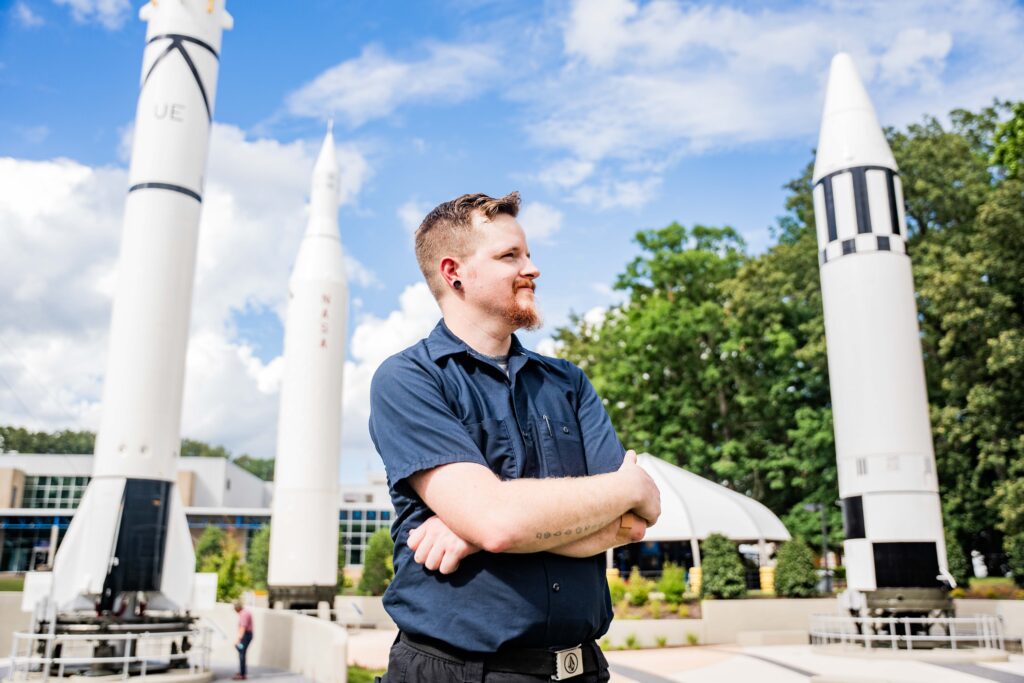UAH grad student helps discover hidden black hole
Reading time: 4 minutes

Guess what? A graduate student in the Department of Physics and Astronomy at The University of Alabama in Huntsville is the lead author of a paper in The Astrophysical Journal describing the discovery of an intermediate-size black hole buried in gas and dust in a dwarf galaxy.
Shrey Ansh was part of a team that discovered the monster black hole, a huge achievement for scientists in the field. Check this out:
The massive black hole

The discovery of the black hole of a previously undiscovered size may help provide clues about how they were seeded in the very early universe.
Obscured from optical observation by heavy dust, the galaxy’s nucleus is powered by the newly discovered intermediate-class black hole, which makes up for size in its mass, according to Ansh.
Typically, galaxies have supermassive black holes at their centers and astronomers can observe them as the surrounding gas and dust fall into them.
Though scientists may call it intermediate, there’s nothing “mid-sized” about this discovery, which contains 160,000 times the mass of the sun, except its size relative to smaller or larger ones. More massive than typical stellar-mass black holes that are only a few times the mass of the sun, it is smaller in size than the million to billion solar-mass supermassive black holes often found in galaxies.
“The amount of obscuring column density that we found could imply that a torus-like geometry found in supermassive black holes could extend into intermediate mass black hole class.”
UAH graduate student Shrey Ansh
A huge discovery by Shrey Ansh and his team

Shrey collaborated with principal investigator (PI) Dr. Chien-Ting Chen, a scientist at the University Space Research Association Science and Technology Institute (USRA STI) and a NASA Marshall Space Flight Center (MSFC) researcher; Dr. Doug Swartz, a USRA STI principal scientist and MSFC researcher; and others internationally to achieve a multi-wavelength analysis of the dwarf Seyfert-2 galaxy J144013+024744.
Chen says that the confirmation of the dust obscured monster in J1440 should give investigators a better idea about how and where to look for more of these objects by combining hard X-ray and mid-infrared emission line observations.
Researchers utilized NASA’s Spitzer Observatory to find the target based on its emission-line signature. Then they targeted the dwarf galaxy for X-ray spectral analysis with NASA’s Nuclear Spectroscopic Telescope Array (NuSTAR), which has its science operations at the California Institute of Technology and is managed by NASA’s Jet Propulsion Laboratory.
“The extracted X-ray spectrum was fitted with physical and phenomenological models and a Bayesian analysis was performed to estimate the column density posterior, which revealed that this particular system hosts a very heavily obscured black hole. The research is also important because past surveys might have missed hidden intermediate-mass black holes, yet our research showed that such populations might exist.”
Shrey Ansh
Ansh, who is from India, came to UAH from Creighton University and is pursuing his masters degree in physics. As a graduate assistant, Ansh does research in black hole physics, Computational Physics and observational astronomy.
This is second such discovered by a researcher at UAH in the last year. In October, a similar discovery was made by a team led by Dr. Sukanya Chakrabarti from the UAH Department of Physics & Astronomy.
Want more info and updates on what’s happening in and around Huntsville? Follow us on Facebook, TikTok and Instagram, and be sure to subscribe to our newsletter.



